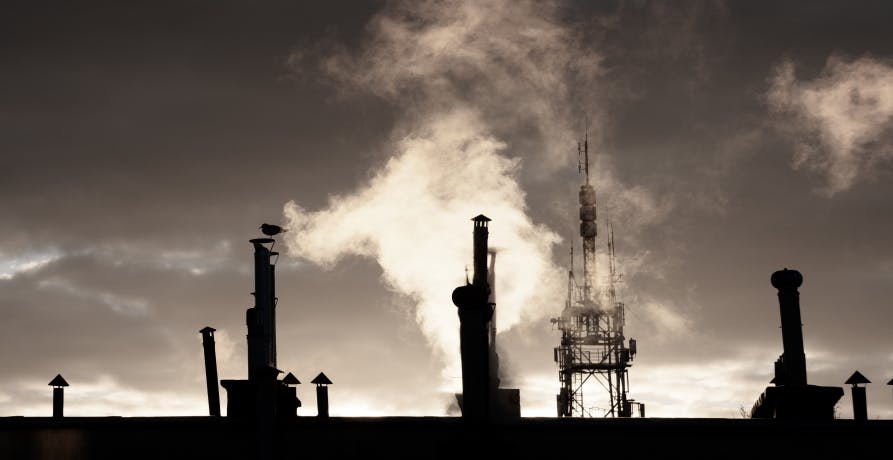
What are the 3 Pillars of Corporate Sustainability?
In this article, we'll explore what the 3 pillars of corporate responsibility are, why they're important, and how businesses can turn them into practical action.
ESG / CSR
Industries



The U.S. has become increasingly aware of the importance of reducing greenhouse gas emissions emissions and seeking to rectify the current condition of the planet – such as delineated with efforts like the Clean Air Act, the Clean Water Act, the Inflation Reduction Act of 2022, and the Greenhouse Gas Reporting Program – better known as GHGRP for short.
What is the Greenhouse Gas Reporting Program, or GHGRP, and how does it help the U.S. to monitor, measure, and reduce their current greenhouse gas emissions?
The GHGRP, also known as the Greenhouse Gas Reporting Program, demands large companies or entities producing exceptional amounts of greenhouse gas emissions to report the greenhouse gas emissions and other potentially harmful environmental activities, such as intensive industrialization, the use of gas suppliers, fuels, or carbon dioxide injection sites across the country are all subject to be reported under the GHGRP. The GHGRP came into effect over a decade ago back in 2009. Currently, around 8,000 entities are expected to comply with the GHGRP every year – and must also make their data accessible to the public before the end of each calendar year.
The information provided by companies and submitted to the GHGRP are meant to be used by businesses to monitor the amount of greenhouse gas emissions being produced in facilities throughout the United States as an effort to seek out new opportunities to reduce pollution, waste, implement energy saving tactics, and lower operational business costs. Therefore, the GHGRP serves as a resource in addition to the EPA’s, or the Environmental Protection Agency, for cities, states, and other areas across the country to decipher and compare the current rate of emissions and establish the appropriate climate legislation.

There are over forty different reporters that help to ensure the GHGRP is successful in its endeavor to successfully share and educate the public on the current rate of greenhouse gas emissions in that area. These reporters require facilities to report to the GHGRP if they produce over 25,000 metric tons of greenhouse gasses annually, or if they supply products that would also create 25,000 metric tons of greenhouse gas emissions, seeing as if those products are to be oxidized or released into the atmosphere.
In short, the GHGRP is a program that requires greenhouse gas emissions to be reported to the public.
The U.S. is the world’s second largest contributor to greenhouse gas emissions behind China – with transportation, electric power, and various industries bearing the greatest responsibility for this vast total. Given nearly half of greenhouse gas emissions produced by the U.S. come from various facilities for industrialization, accumulating to a whopping 3 billion metric tons of carbon dioxide emission per year, the GHGRP was implemented in order to gain control and greater insight over the reasons behind these excessive greenhouse gas emissions.
It is difficult to establish measures to improve upon something when you don’t have a full understanding of the current scenario. For instance, someone who wants to improve in a school subject, such as math, wouldn’t be successful in rectifying their mathematical skills by simply reading their entire class textbook from start to finish. The best way for the student to identify their areas of improvement would be to review their last test or quiz, review their mistakes, and learn how to do those math problems correctly. It is a waste of time for the student to study what they already know.
The same goes for industries, companies, and facilities looking to reduce their greenhouse gas emissions and governments looking to establish the proper legislation aimed towards emission reductions and achieving various climate goals. The GHGRP allows congress to be provided with the data to properly evaluate the current environmental situation and implement the most effective legislation to reduce those greenhouse gas emissions.
In order to monitor the largest array of greenhouse gas emissions, the GHGRP allows for these greenhouse gas emissions reports to be available to the public – even the previous reports from over a decade ago, making the GHGRP reports from 2010 to 2021 accessible to all. This helps governments to develop the proper climate strategies and emission reduction policies.
Ultimately, the Greenhouse Gas Reporting Program seeks to make data on greenhouse gas emissions widely available to the public in order to rectify the current environmental circumstances and promote transparency regarding the environmental impact of various companies and facilities.

The Greenhouse Gas Reporting Program, or the GHGRP, is essential in the midst of climate change. This is because without the GHGRP, many governments would propose climate legislation that is too general in order to provoke a substantial effect in reducing greenhouse gas emissions or mitigating further environmental damage.
Currently, the U.S. is becoming more interested in developing climate legislation – but it isn’t standardized across the country. States like California and New York have been more climate-change forward than some in the midwest or Middle America – meaning that the country is in dire need of a unified effort to measure emissions and develop laws in accordance with the current level of greenhouse gasses present in the atmosphere.
Think of the GHGRP in a similar way to the SATs or the ACT test – which is a standardized exam that many students in high school across the country take in order to get accepted into college. These standardized tests are completed and necessary given high schools across the United States are operating at different levels of rigor – meaning a grade point average, or GPA, at one school might not be as impressive at another school. Therefore, tests like SAT and the ACT are meant to help make college admissions operate on a fair playing field.
Ultimately, the GHGRP attempts to do the same – as it will help to reveal any discrepancies in greenhouse gas emissions depending on the area, and will help to encourage stricter environmental regulation in the areas where it is needed.

Unlike the European Union, the United States hasn’t made reporting greenhouse gas emissions a priority nor a necessity until recently. The closest regulation to the Greenhouse Gas Reporting Program, GHGRP, is one that is still yet to be fully implemented – and that’s the new SEC ESG Fund-Labeling Proposal.
The ESG Fund-Labeling Proposal by the U.S. Securities and Exchange will require companies to share their potential business risks that could impact the viability of their business model, financial prospects, but most importantly – improve transparency regarding their greenhouse gas emissions and to report their scope 1, scope 2, or scope 3 emissions. Ultimately, the SEC ESG Fund-Labeling Proposal will require large enterprises with certain criteria to report their greenhouse gas emissions to rectify funds with ‘ESG’ in the title to determine if they are worthy of being classified as ESG Funds. This will all be done to protect investors and ensure that the investments contribute a significant amount of their proceeds to environmental and social causes, in addition to preventing greenwashing, improving transparency, and encouraging businesses across the United States to reduce emissions.
While the main goals of the Greenhouse Gas Reporting Program and the SEC ESG Fund-Labeling Proposal are different, both are major programs that demand corporations across the country to report their greenhouse gas emissions and strive to raise awareness on the importance of understanding a company's scope emissions in order to better reduce them.
The GHGRP serves as a great reference for lawmakers to develop climate legislation and for companies to practice transparency – but is it a full proof greenhouse gas emissions reduction program?

While the GHGRP is good at mandating greenhouse gas emissions reports from large enterprises and facilities, it does not require these entities to set emission targets to reduce their excessive greenhouse gas emissions. Therefore, in a sense – the GHGRP acts in a similar way to a score on an exam. A poor mark may encourage one student to improve their grades, but it may provide absolutely no incentive to another student – and they will continue to make no efforts to improve their standings. The same goes for large enterprises and facilities required to report to the GHGRP.
Given this viable possibility, one of the ways that the GHGRP could improve is by providing recommendations in correlation to the current rate of greenhouse gas emissions being produced in the areas of these large enterprises. In other words, the GHGRP could provide numerical data in accordance with suggestions for governmental authorities to propose and instill effective emission reduction measures – making it even easier and simpler for those with governmental jurisdiction to create those laws. Since the GHGRP can’t do anything more than demand a report from the other large enterprises, it’s up to the GHGRP to provide as much information and details as possible to encourage lawmakers to propose the most effective legislation.
In addition to this, GHGRP can only require large enterprises to report their greenhouse gas emissions, those that produce more than 25,000 metric tons of greenhouse gas emissions per year. This means that even middle-tier companies producing a substantial amount of emissions may go unnoticed, and that they do not have to make their reports publicly available in accordance with the GHGRP. While the GHGRP cannot demand small or mid-sized companies or facilities to report their emissions, the GHGRP should provide lawmakers with estimates of the overall greenhouse gas emissions being created in those areas through the use of the data collected from large facilities. This will help to ensure the best lawmaking possible to reduce greenhouse gas emissions.
Ultimately, the Greenhouse Gas Reporting Program, or the GHGRP, serves as a way to raise awareness on the amount of greenhouse gas emissions being produced in an area and subsequently develop the correct environmental laws in accordance with that newfound data. However, the GHGRP can’t make it compulsory for these facilities to reduce their emissions – revealing how the GHGRP is another example of how the fight against climate change is a collective effort, and will only be successful if every player does their part.
If reading this article about the Greenhouse Gas Reporting Program, or the GHGRP for short, has made you interested in reducing your carbon emissions to further fight against climate change – Greenly can help you!
It can be challenging to monitor, measure, and ultimately reduce your emissions – especially if your company doesn’t even know where to start. It’s impossible to create a personalized emissions reduction plan without the proper, preliminary calculations – and that’s where Greenly can help. Click here to book a demo and learn more about how we can help you to measure and reduce your various scope emissions.